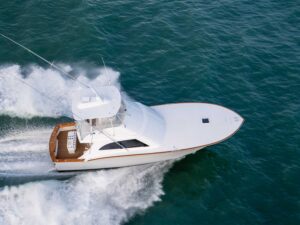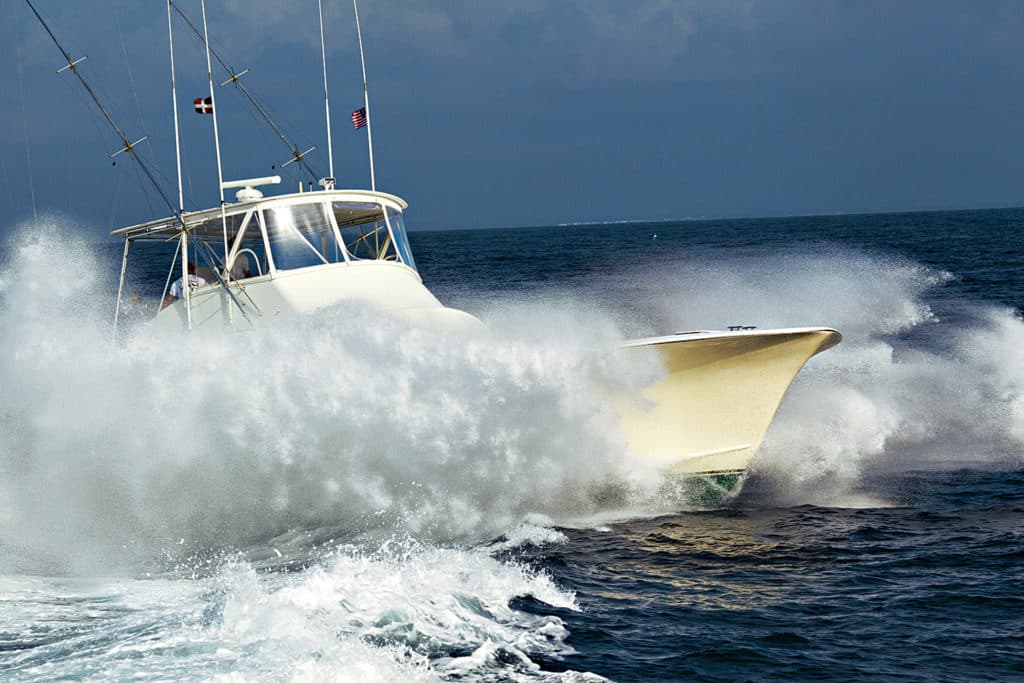
Dry Run
Without a good set of curtains, many days offshore have the potential to be pretty miserable. Like most things, technology has given us materials and components to greatly improve the clear curtains used on open-bridge boats. This includes soft curtains that can be rolled up as well as “hard” acrylic or polycarbonate curtains that have found a place on open-bridge boats.
You can get good results with all three types or a blend of the three, in some cases. Basically, it comes down to personal preference, where you use your boat and — the most critical thing — who tailors and assembles your curtains.
Without quality fabrics and threads as well as good zippers to surround them, you will not get the longevity or the results you need to have good visibility in all weather conditions. Without a detail-oriented tailor to correctly pattern, cut, sew and fit the curtain to the boat, you end up with wrinkly curtains that can be difficult to see through and don’t look good on the boat.
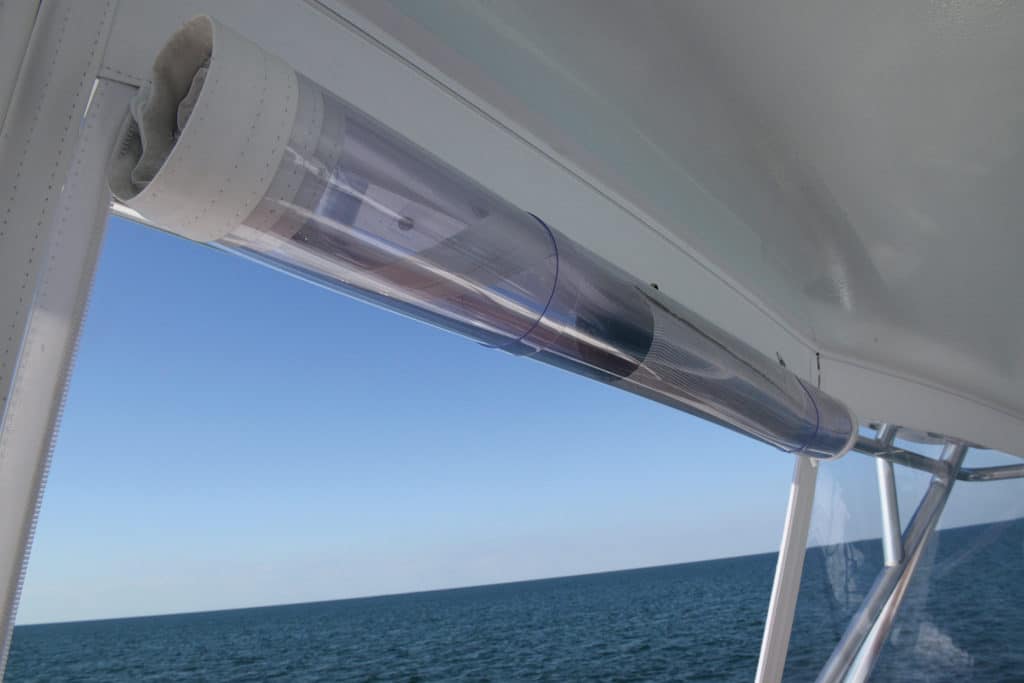
Soft or Hard?
Commonly referred to as Isinglass, today’s curtains are not made from the natural materials that name traditionally refers. Soft curtains are made of vinyl and are available in different thicknesses, measured in millimeters, depending on the application. The thicker the material is, typically the better the visibility — up to a point. Thickness also aids longevity and reduces the wavy nature of the thinner materials normally seen on smaller center consoles. Regular vinyl is also susceptible to etching from chemicals in the atmosphere due to its porous nature, so it does not last as long and requires more frequent maintenance.
Strataglass is a vinyl with an integral protective coating and is my personal favorite. I have it installed on all the boats I run because it is easily rolled up with U-shaped panels sewn in to allow air to flow through the bridge on hot summer days. Strataglass is easily maintained and has good longevity when properly cared for. Due to its protective coating, Strataglass resists etching from harsh environmental conditions and maintains a clear view for a longer time than straight vinyl.
There are several well-known hard-panel acrylic products such as EZ2CY and Costa Clear. These acrylic material panels have had success in the marine market. Almost invisible, their clarity is remarkable; again, with proper maintenance, the panels will remain clear for quite some time. They are known for not changing color, and scratches can most often be buffed out. These full enclosures tend to be hot in the tropics, with limited access to open them up and let air through. They are also known for crazing, cracking and shattering like glass as they age because they are so hard.
Polycarbonate panels are quickly taking hold in the premium large center-console market. They are optically clear-looking hard glass and rigid, with little to no distortion at .080 mm thickness.
However, on small panels like 32- to 45-foot center consoles, it’s easier to have strong panels that won’t be as affected by the stresses of speed and wind velocity as opposed to larger panels that we typically find on sport-fishing boats. Polycarbonate panels on larger boats are a good option if you are not looking to roll up or open up your bridge because this material seems to be highly resistant to breaking or shattering.
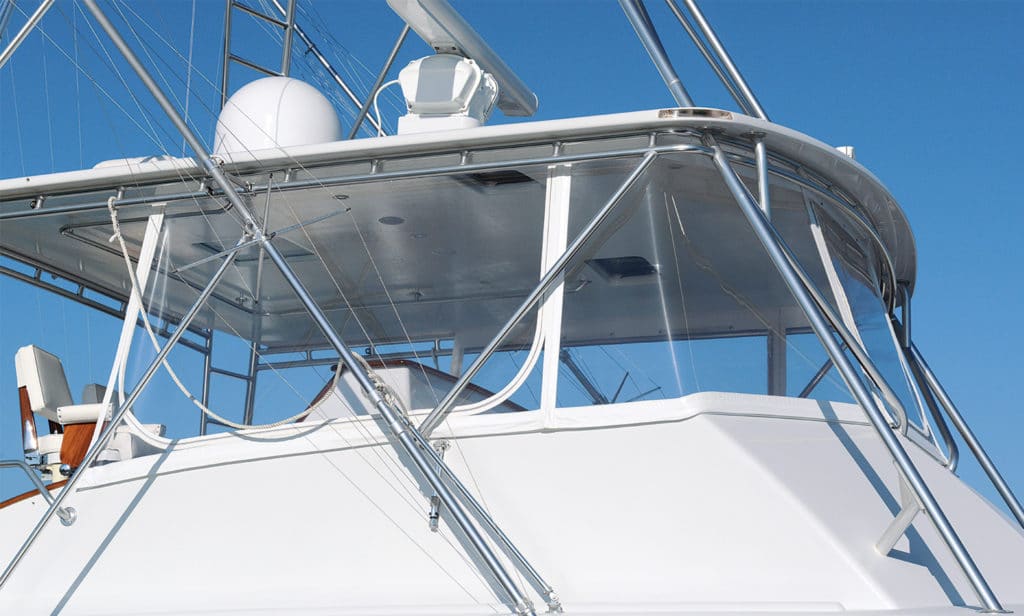
Custom Fitting
The U-shaped panels that we use with soft curtains are cut into the main panel that remains fastened to the boat, either with track or Lift-The-Dot fasteners. Thicker vinyl or Strataglass can be pulled tight, offering wrinkle-free viewing, and it wraps around the forward corners in a way that eliminates visibility-stealing seams on the corners like hard panels do.
Obviously, the vinyl will offer the clarity of the Strataglass, and it is less costly; however, this is one place where being miserly can cost you in the long run. Good visibility in poor conditions is a must on the water, and basic vinyl will hamper that.
Most curtains today are fastened with tracks and zippers due to the speeds and large size of the panels needed for today’s big and fast sport-fishing boats. In many cases, the tracks are through-bolted so the forward panels can hold the significant pressure and stresses from a boat running 30-plus knots into a 15- to 20-knot breeze. Another beauty of using track is that it significantly reduces the amount of water coming in from under or over the curtain. A hard-driving spray will push water through if there is a place for it to come in.
Upgraded large zippers with the newer style large plastic teeth are also a must. We have pulls made of nylon cord added to the zippers so it is easier to open and close them. Our curtains all have Velcro flaps sewn over the zippers to restrict water from coming in through the teeth. We don’t use the half-moon cutouts with a zippered flap on top of the forward curtains because they leak when spray is flying and drip down the inside of the curtain.
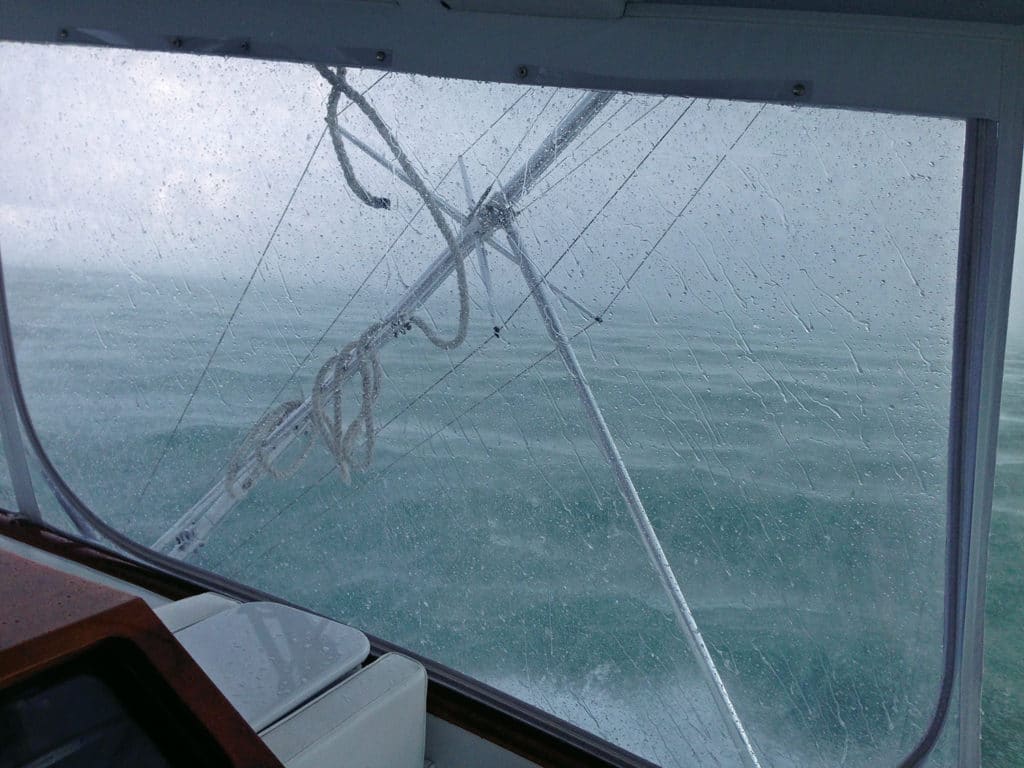
Care and Maintenance
I’ve heard a lot of talk about how to wash and care for curtains. Use a mild soap instead of a harsh detergent; this yields the best results for longevity when paired with proper protection. You should be using a mild soap on the boat anyway so you are not degrading the paint or wax. We use a gel wash made by Meguiar’s that has served us well for years. It’s gentle on the paint and everything else on the boat. Do not use an all-in-one wash and wax product on your curtains; it will discolor and cloud them over time. Strataglass recommends using its IMAR Strataglass protective cleaner followed by IMAR Strataglass protective polish. To protect our curtains, we use a cream or Carnauba wax, something with no abrasives, like Rally cream wax or Mothers Carnauba wax. I’ve been using this for over 25 years and have gotten eight to 10 years out of my curtains no matter how hard we traveled and fished.
We are careful not to get sunscreen on them because this will cloud and discolor them. Never use Pledge; it will cloud and discolor your curtains as well as leave a greasy film. Avoid Simple Green or other harsh cleaners because they will etch and damage the panels quickly. We use a chamois, never a rubber squeegee because they can scratch the panels. We always roll our U-Zip panels up with a towel so that the glass does touch itself and rub against itself when fishing all day.
We store the panels with either terry-cloth towels or non-acidic paper between each panel so they do not touch each other. When hosing the bridge, we flush the zippers between each panel by running them up and down while soaking to remove any salt water that could dry and seize the zipper. This also helps zipper life by frequently exercising them.
Curtains are a big investment, but by choosing the right product for your needs, taking the time to care for them properly and finding the highest quality shop to make them, you can invest in the best quality enclosure for the long term and not have to redo them every couple of years. Staying abreast of what products are proven over time will allow you to get the best visibility and longevity from your enclosure. And you’ll also be a lot drier and more comfortable.
